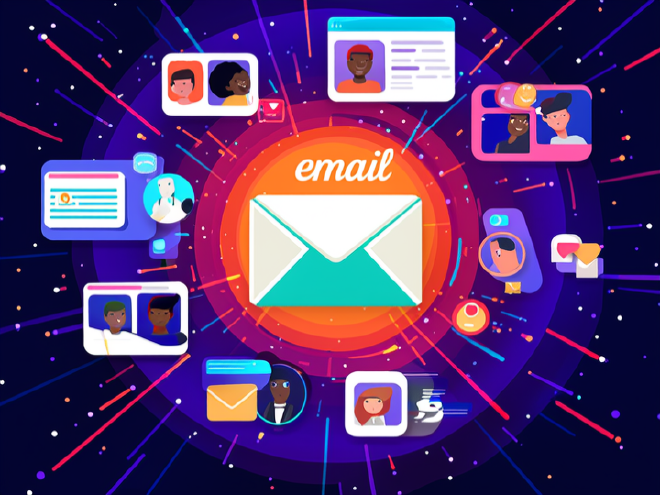How the Retail Industry Can Improve Customer Conversion Rates Through Email
Table of Contents
How the Retail Industry Can Boost Customer Conversion Rates Through Email #
In today’s increasingly competitive retail market, attracting customers and encouraging them to make a purchase efficiently is a challenge every retail business faces. Email marketing, as a mature and effective digital marketing method, is gaining increasing attention from more and more retail brands. It is not only cost-effective and widely accessible but also enables precise targeting and personalized communication.
So, how can the retail industry use email to improve customer conversion rates? This article will deeply analyze how to build a high-conversion-rate email marketing system from four dimensions: strategy formulation, content optimization, automation processes, and successful case studies.
I. Clearly Define Your Target Audience and Build a Precise Email List #

Successful email marketing begins with a high-quality customer email list. Retail businesses should avoid indiscriminate mass sending and instead build precise user profiles and segmented groups through the following methods:
- Optimize Subscription Entry Points: Set up prominent subscription entry points on websites, apps, offline stores, etc., offering exclusive discounts or membership benefits as incentives.
- Behavioral Data-Driven Segmentation: Group users based on their browsing, adding-to-cart, purchasing behaviors, such as “high-intent users,” “dormant users,” “newly registered users,” etc.
- Data Cleaning and Updating: Regularly clean invalid emails to avoid rising spam rates and impacting overall email deliverability.
Key Tip: Precise segmentation is the foundation for improving email open rates and click-through rates.
II. Design High-Converting Email Content and Structure #
Email content should not only attract attention but also guide users toward completing a conversion action. Here are several core elements to enhance the conversion power of email content:
1. Engaging Subject Lines and Preview Text #
- The subject line should be concise and impactful, highlighting urgency or value, e.g., “Limited-Time Offer: Save 50 Yuan on Orders Over 300 Yuan, Only Today!”
- The preview text complements the subject line, sparking users’ desire to click.
2. Personalized Content Presentation #
- Use users’ names, purchasing preferences, browsing history, and other information for personalized recommendations.
- Utilize dynamic content modules to display different products or offers to different users.
3. Clear CTA Buttons and Purchase Paths #
- Use highly contrasting colors for CTA buttons and clear wording, such as “Buy Now,” “View Recommendations,” or “Claim Coupon.”
- Embed product links within the email or direct users to dedicated landing pages to shorten the purchase path.
4. Visual and Mobile Optimization #
- Adopt responsive design to ensure good display across different devices.
- Combine images and text to avoid excessive text-only content and enhance readability.
III. Build Automated Email Marketing Processes #
Automated emails not only save labor costs but also enable precise targeting and instant responses, which are key strategies for improving customer conversion and repeat purchases.
1. Welcome Email Series #
- Send a welcome email immediately after a new user registers, introducing the brand and providing exclusive offers.
- A series of 3-5 emails can gradually guide users toward making their first purchase.
2. Abandoned Cart Reminders #
- Send reminder emails when users add items to their cart but fail to complete the purchase.
- Include coupons or limited-time discounts to increase recovery rates.
3. Purchase Reminder and Personalized Recommendations #
- Based on users’ historical purchase records, recommend related products or complementary items.
- Use the RFM model to identify high-value customers and send customized content.
4. Holiday/Promotional Event Emails #
- Send promotional emails during holidays, member days, brand anniversaries, etc.
- Pre-set templates and content to ensure a tight and efficient marketing rhythm.
IV. Case Study Analysis: From Strategy to Implementation #
Case Study 1: ASOS’s Personalized Recommendation Emails #
ASOS analyzes users’ browsing and purchasing behaviors to generate personalized “Recommended for You” emails for each user. The five products displayed in the email are all items recently viewed or browsed by the user, combined with a “You Might Also Like” recommendation mechanism, significantly boosting click-through and conversion rates.
Results: Click-through rates for personalized recommendation emails were 30% higher than those of regular emails, and conversion rates increased by 20%.
Case Study 2: Sephora’s Member Exclusive Emails #
Through its membership program, Sephora sends exclusive content to members of different tiers, including new product trials, points redemption, birthday gifts, etc. The email content not only demonstrates brand care but also enhances customer loyalty.
Results: Open rates for member emails reached as high as 45%, and repurchase rates were significantly higher than those of non-members.
V. Continuous Optimization: Data-Driven Email Marketing Upgrades #
Email marketing is not a one-time effort but an ongoing optimization process. Retail businesses are advised to:
- A/B Testing: Conduct A/B tests on subject lines, content, CTA buttons, etc., to find the optimal solutions.
- Analyze Key Metrics: Pay attention to core data indicators such as open rates, click-through rates, conversion rates, and unsubscribe rates.
- Regularly Update Content Strategies: Adjust email content and sending frequency based on user feedback and behavioral data.
Conclusion: Let Emails Become a Booster for Retail Growth #

The value of email marketing in the retail industry is being redefined. It is not only a bridge connecting brands and customers but also an important tool for improving customer conversion rates and enhancing user stickiness.
Start optimizing your email marketing strategy now! Whether it’s building a precise user list, designing high-conversion content, or deploying automated processes, every step can bring substantial growth to your retail business.
Call to Action: If you want to learn more about practical strategies for customer conversion in the retail industry, subscribe to our newsletter to receive the latest industry insights and success stories.